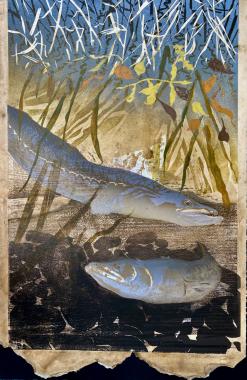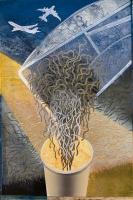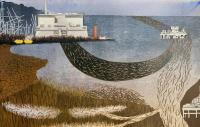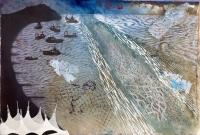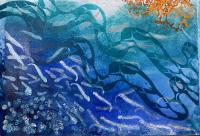Yellow Eels by Julia Manning RE
Product details
- Title
- Yellow Eels
- Artist
- Julia Manning RE (i)
- Medium
- Linocut (i)
- Numbered
- /6
- Size (WxH)
- 50 x 75cm
- Framed
- No
- Ref. No
- 24565
The European eel is classed as ‘Critically Endangered’ by
the International Union for Conservation of Nature, it appears on their ‘Red
List’ of threatened species. Since 1970, the numbers of juvenile eels entering
the European fishery has declined by more than 95%. These Anguillid eels have
been around for about 80 million years.
Glass eels come in from the sea and ascend our waterways,
once they’ve been in freshwater for a short time they change into elvers. They
become pigmented and resemble miniature versions of their pre-adult selves.
They continue to grow and seek suitable habitat in which to thrive. At this
early stage these elvers and small yellow eels are sexually undifferentiated.
They will either stay relatively small and become males in a fairly densely
populated part of the river system, normally the lower, downstream areas; or
they will move further upstream into less densely populated areas where they
will become females and grow much larger. The gender trigger appears to be
density dependent.
The many weirs and man-made obstructions that are used to
regulate and control river flows may hinder these upstream migrations. Special
‘eel passes’ have been designed and can be installed to overcome these
obstacles.
